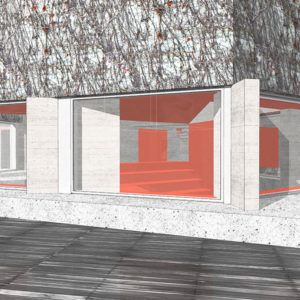Adrian Tone
www.adriantone.com- Painting
New paintings by Joe Fyfe.
Three painted rectangles, quiet and strange. An alien quality pervades. One does not look at them so much as one watches them. The senses are confused. Maybe they are imprints of the sound of wind or water or the smell of tar or stone. The artist’s interests in quantum theory and the behavior of photons seems relevant-the graininess and discontinuousness of discrete amounts of energy. Any reading ofscale is unverifiable. Adrian Tone depicts an elsewhere that is locatable only through projection on the part of the viewer, or one must search for clues.
These flat planes of inflections are insistent but also delicate and tangible. Out of nothing more than an overall texture there is quicksilver monumentality. Scanning the surface, these renderings of particles seems to break down and reconstitute themselves. The hand is absent. Instead, an automatism that hints at some hidden process—there are rivulets in some corners, a membrane crumples in another. The surfaces slowly reveal their complexity, flipping back and forth between the micro and macrocosmic. The latter is like passing over some vast planet: there is the uncertain ground, with various crevices and patterns of erosion, but seen through an atmospheric scrim of gas, boulders and grit.
The black one has flat, muscular mounds, like silent dead seas of tremendous depths or, alternately, the desert at night, like Déserts, an orchestral work by the modern composer Edgar Varése, who wrote that it was “not only physical deserts of sand, sea, mountains, and snow, outer space, deserted city streets… but also distant inner space…alone in a world of mystery and essential solitude.”


